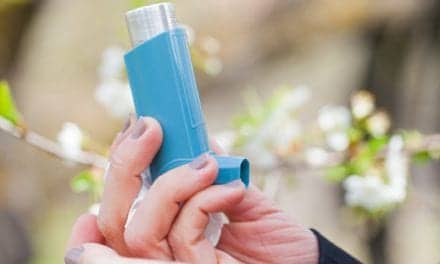Residents of Lower Manhattan who suffered home damage following the September 11 terrorist attacks are more likely to report respiratory symptoms and diseases than are area residents whose homes were not damaged, concludes a study conducted by researchers in Atlanta and New York City. The researchers based their study on data collected in the World Trade Center Health Registry (WTCHR), a cohort study of more than 71,000 rescue/recovery workers and survivors of the World Trade Center attacks.
The study results were presented earlier this week at the [removed]ATS 2012 International Conference[/removed] in San Francisco.
Thousands of Lower Manhattan residents sustained some type of damage to their homes following the 9/11 collapse of the twin towers. Although previous studies found an increased level of asthma reported by residents who experienced a heavy layer of dust in their homes following the attacks, this is the first study to use WTCHR data to evaluate the specific effects of home damage, including broken windows and damage to furnishings, on other respiratory diseases and symptoms in addition to asthma.
"This preliminary analysis demonstrates that Lower Manhattan residents who suffered home damage following the 9/11 attacks are more likely to report respiratory symptoms and diseases in the Registry," said Vinicius Antao, MD, MSc, PhD, study author and registries team leader at the Centers for Disease Control and Prevention’s Agency for Toxic Substances and Disease Registry (ATSDR). "These health outcomes persisted for at least 5 to 6 years after the event. Thus, they may have translated into elevated medical expenditures and lower quality of life."
The researchers used data from 6,463 area residents who participated in both the Registry’s Wave 1 survey conducted 2 to 3 years after 9/11 and the Wave 2 survey, conducted 5 to 6 years after 9/11.
The researchers specifically looked at respiratory symptoms, including shortness of breath, wheezing and persistent cough, which first occurred or became worse after the September 11 attacks and which were present during the Wave 2 time period. They also looked for respiratory diseases, such as asthma and chronic obstructive pulmonary disease (COPD), which were first diagnosed after the attacks and which were present during the Wave 2 survey period.
The researchers found that 60.8% of survey respondents reported new onset or worsening upper respiratory symptoms 5 to 6 years after 9/11. In addition, 16.1% of respondents reported shortness of breath, 10.7% reported wheezing and 6.9% reported chronic cough. The researchers also found that 8% of survey respondents had been diagnosed with asthma, and 5.4% had been diagnosed with COPD.
After controlling for gender, age, education level, smoking status, and exposure to the dust and debris cloud, Antao and his colleagues found that Lower Manhattan residents who had reported a heavy coating of dust on their homes were, on average, 50% more likely to report a respiratory symptom or disease.
"This study highlights the magnitude of the 9/11 attacks by showing that people exposed to dust in their homes continued to have respiratory problems even 5 to 6 years after the fact," Dr. Antao said.
Antao and the researchers are interested in examining next the influence of distance from Ground Zero on the types and frequency of adverse respiratory outcomes reported after 9/11.
Source: American Thoracic Society









